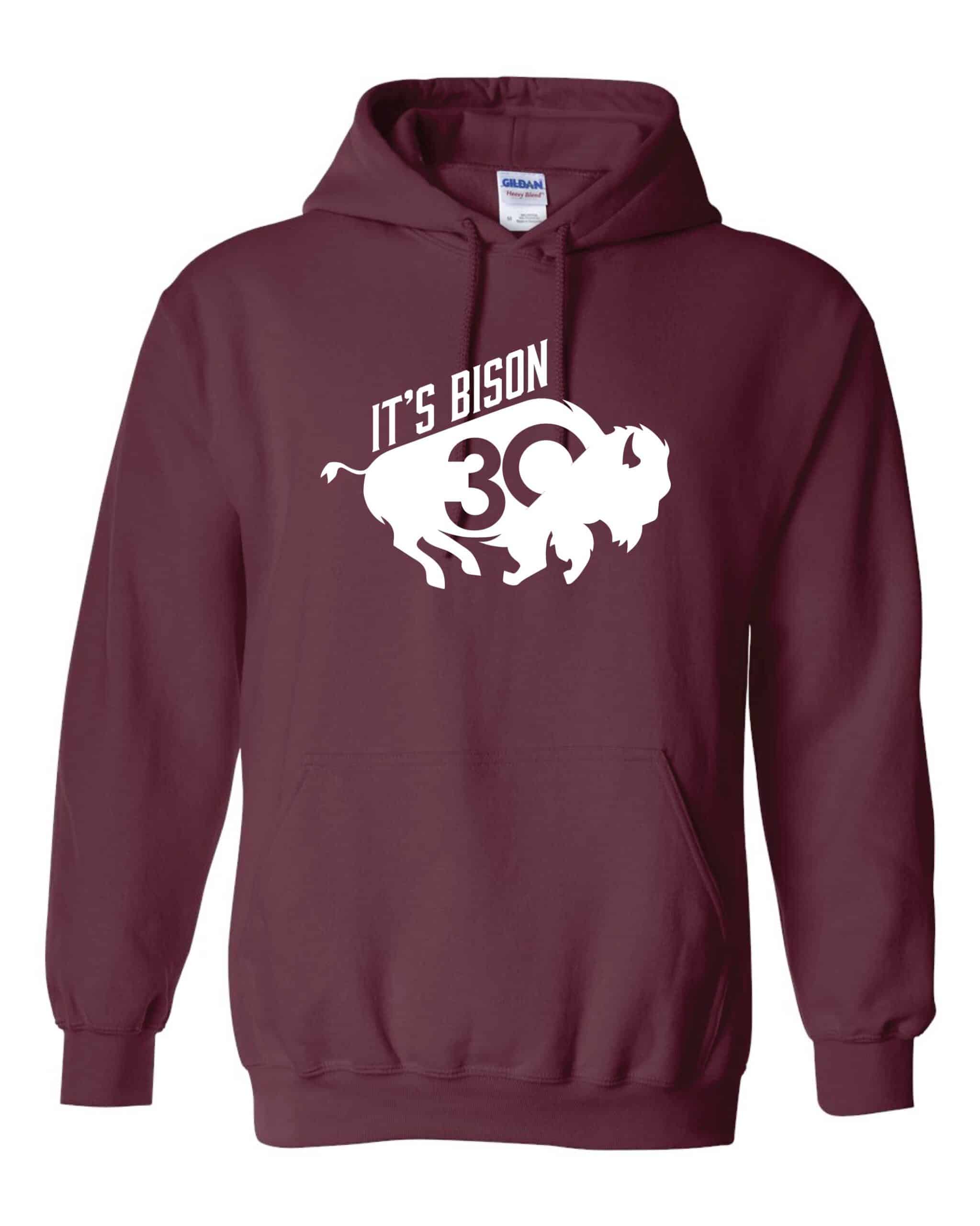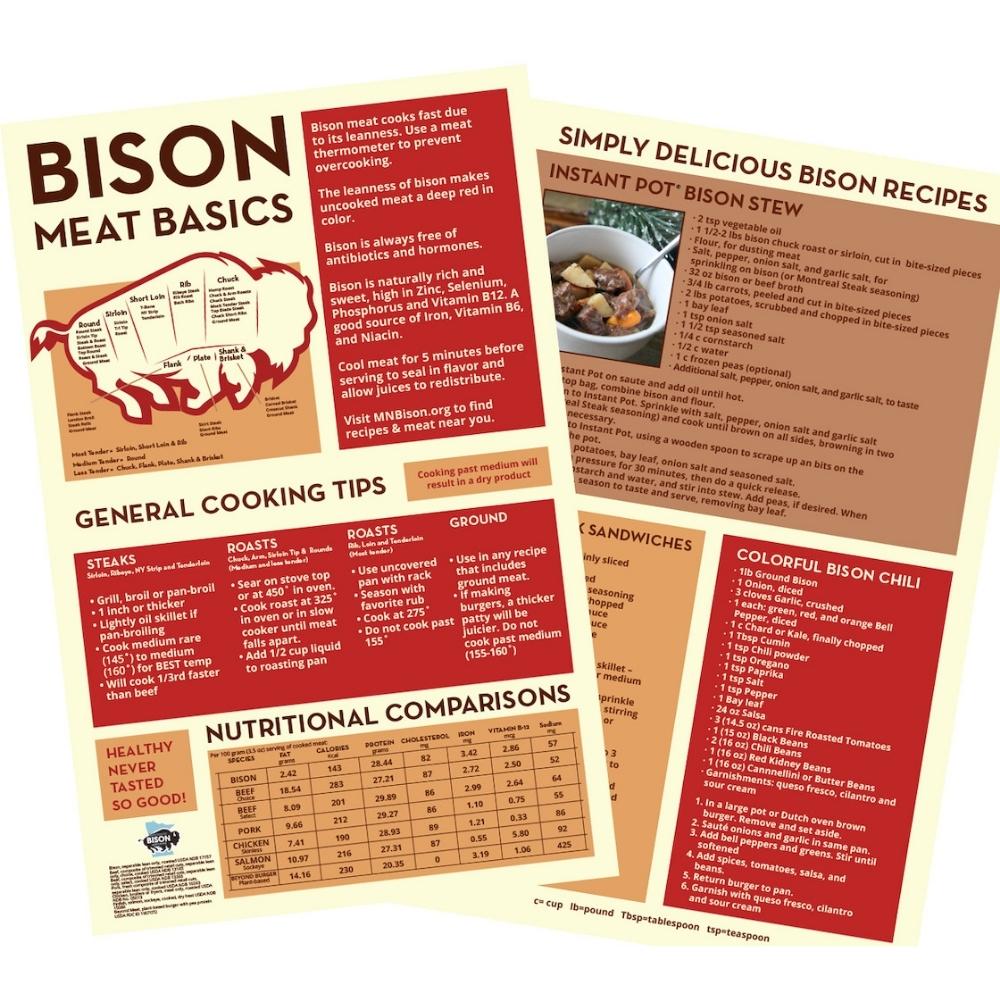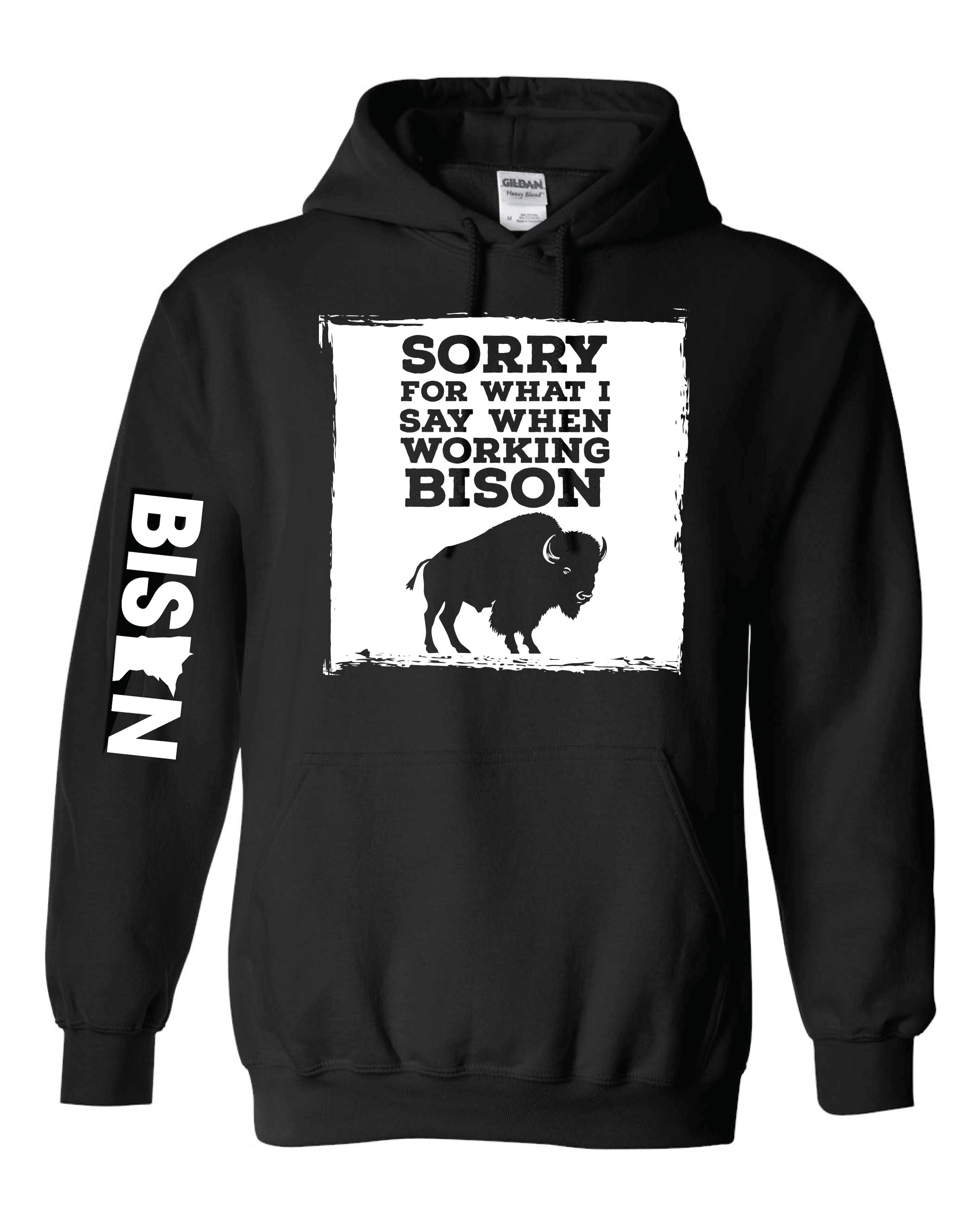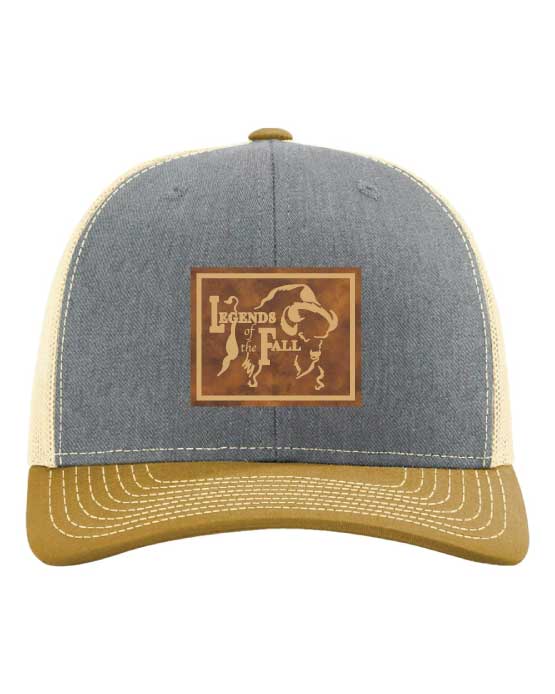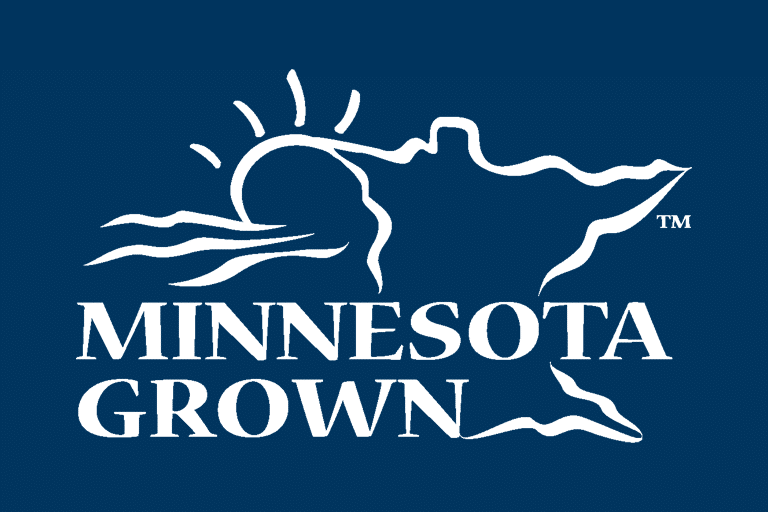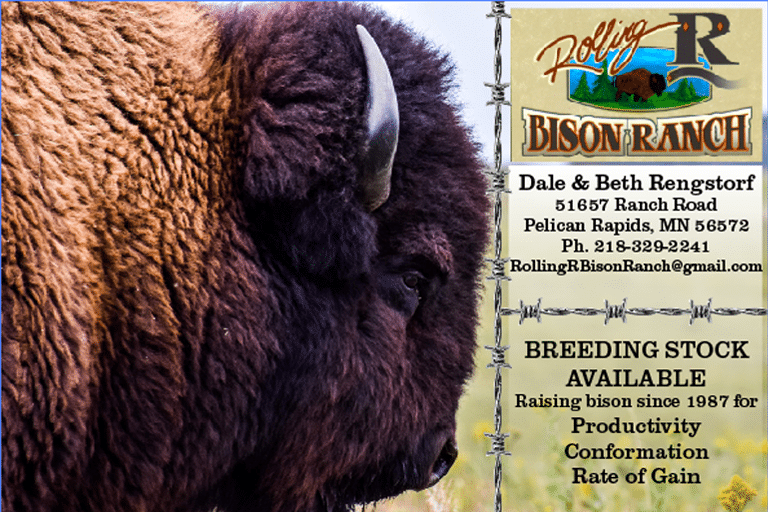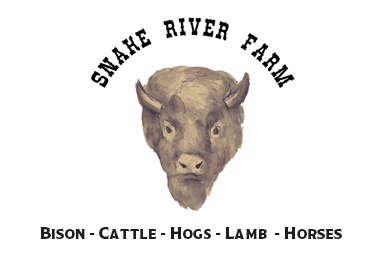Bison Basics Handbook
Raising a North American Icon
Ask a current bison producer and they are apt to tell you their herd has educated them far more than they have educated the herd. MnBA’s Bison Basics booklet shares an introduction to raising this majestic animal.
About this Resource Guide
This booklet has been compiled by members of the Minnesota Bison Association (MnBA) who put into words their knowledge, research and experience in raising this majestic animal. Its purpose is to address very basic information about the bison industry.
#1: Our top recommendation is to visit established bison producers in your area. These visits are essential to understand the options that exist as related to types of operations, fencing, corrals, pastures and the like.
#2: Number two on the list is to join the National Bison Association and your area’s State or Regional Association. The education and networking offered more than offsets the nominal annual dues.
Table of Contents
The Bison Advantage
- No barn (artificial shelter) needed
- Outdoors, year round, no matter the weather
- Efficient feed utilizers
- Long productive life
- Primary requirements: fresh water and adequate nutrition
- Calving rarely requires human intervention
- Superior hardiness results in disease resistance
- Thrive in many environments with no ill effects
- The meat they provide is low fat and high protein
- There is considerable consistent growth in consumer’s demand for bison meat
- Free enterprise market without excessive intervention
Species: Plains and Wood Bison
Just What Are Bison?
The bison is a member of the bovine family and is the largest mammal on the North American continent. There are two subspecies: Plains Bison (Bison bison bison) and Wood Bison (Bison bison athabascae). Wood bison are commonly located in Canada and are larger than the Plains Bison.
The words Bison and Buffalo are both used in singular and plural sense.
Plains Bison
Pelage characteristics of a Plains
- Dense woolly bonnet of hair between horns
- Thick beard and full throat mane, extending below rib cage
- Well-developed chaps
- Well-demarcated cape, lighter in color than wood bison
Structural Characteristics
- Highest point of the hump over front legs
- Horns rarely extend above bonnet
- Smaller and lighter than the Wood Bison (within similar age and sex classes)
Wood Bison
Pelage characteristics of a Wood
- Forelock dark, hanging in strands over forehead
- Thin beard and rudimentary throat mane
- Reduced chaps
- No clear cape demarcation, hair usually darker than Plains Bison
Structural Characteristics
- Highest point of the hump forward of front legs
- Horns usually extend above forelock
- Larger and heavier than plains bison
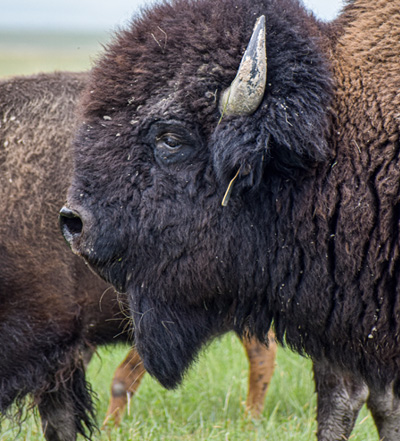
Is it Bison or Buffalo?
The animal most people in the United States call buffalo is not a real buffalo at all. A true buffalo is actually the African Cape Buffalo and the Water Buffalo.
The word buffalo became associated with the American Bison back in the seventeenth century. French explorers in North America referred to the never before seen species as "les boeufs", meaning oxen or cattle. Arriving English settlers changed the pronunciation to "la buff". The animal’s nickname altered over the years eventually transitioning to the word buffalo.
Bison Characteristics
Bison are curious, intelligent, territorial, dignified, playful and tremendously strong. The nature of the animal requires they be treated with respect and caution. They are wild animals. While not mean, they will not hesitate to react if they feel threatened.
Bison are very protective and have a very strong herding instinct. They stay in cohesive groups and it takes learned knowledge to separate one from the herd. They are protective of their young and will position themselves between a perceived threat and their calves. One or two isolated bison will not thrive.
Handling them slowly and gently is the safest approach for both the animal and the handlers.
Even in farming /ranching environments, bison have retained their natural survival instincts. They can weather storms that are known to kill entire herds of cattle. By facing into the wind their hair lays down and that is all the protection they need. As summer arrives they shed their winter coats and they relax in the sun with noses turned into the breeze. The animal loves water and will demonstrate their excellent swimming abilities given the opportunity.
As massive and bulky as they appear, many people perceive the animal to be slow and awkward. In reality, bison can outrun and out-maneuver most horses. If on the run, they can easily break through fences, gates and most corrals. They can be unpredictable and may charge if they perceive danger. They are also capable of pivoting on either their front or hind feet with incredible speed.
Using their massive heads like shovels, bison can root through deep snow cover to get to the grass below. When necessary they can eat snow for water, though fresh water is preferred.
Bison "wallow". This means they roll in dirt. This is a grooming activity which aids in the removal of insects from the fur. Wallowing also allows male bison to lay down their scents and to displace aggression.
Note: Due to the hump on their back mature bison cannot completely roll over.
Tail Communications
Bison will raise their tail when they are perturbed. An informed observer will understand the position of the tail will indicate what the animal is likely to do next. Undisturbed animals tails will be in a down position.
All Bison:
- Have short curved hollow horns that are used for defense. A cow’s horn base will be similar to the size of her eye where a bull’s horn base is significantly larger.
- Grow winter coats and shed the excess hair as summer approaches resulting in a very shaggy appearance for a while. Some producers have noted that the timing of adding and shedding of the winter coat is a good indication to them of weather to come.
- Have humps that have muscles that hold up their massive heads.
- Make a “grunting” sound to communicate to one another. Each unique.
- Swing their lowered heads side to side telling another bison or intruder to move out of the way or consequences may follow.
Bulls
Bison bulls are highly territorial and one bull will always establish dominance no matter how large the herd. At maturity, they will stand approximately 6 feet tall and weigh 1800 to 2400 pounds.
In addition to their “grunt” communication, if there are multiple bulls in a herd one may hear bulls use a very deep growl, some say it sounds like a lions roar, in attempts to establish dominance.
Cows and Calves
The average cow is roughly 5½ feet tall and weighs between 800-1200 pounds at maturity.
Bison calves, born a tan to cinnamon color, nurse more frequently than cattle. The utter of a cow is quite small. Mother Nature at her best...the small utter allows cows to lay on frozen ground with-out harm to the utter. Calves begin to nurse and eat forage on the day they are born.
Calves develop rapidly, weighing around 50 pounds at birth. The mother’s milk is rich in protein and fat and most calves will nurse for at least six months.
By fall of the first year the calves coat will begin to turn to the traditional bison color.
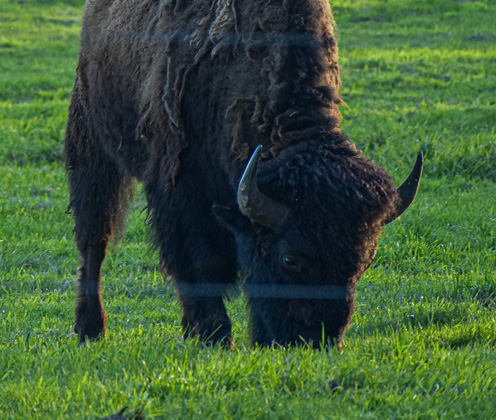
Breeding Stock Selection
Attending a judged bison auction will allow the opportunity to visit with the judges of the show animals and learn from their experience.
Often four categories are used for evaluation.
Condition: The condition of an animal can determine its ability to carry out life’s functions in a normal process. When viewing the animal you can evaluate the management and husbandry of the producer.
Females in good condition give birth to calves with great vigor. The calves stand sooner and nurse more aggressively. Too much conditioning produces animals that may have calving problems and impaired mobility.
Other indications of good condition include hair luster, alertness, with minimal fat covering over ribs.
Quality: Well balanced and uniform nose to tail and top to bottom through the depth of the animal. Animal will have a pleasing appearance, alert but not overly aggressive.
Soundness: Animals should exhibit correct body features and skeletal structure. Body should be free from defects. An example would be a “bullish” head on a cow and narrow, cow-like face on a bull. More than likely that is a genetic trait that most would not want to continue.
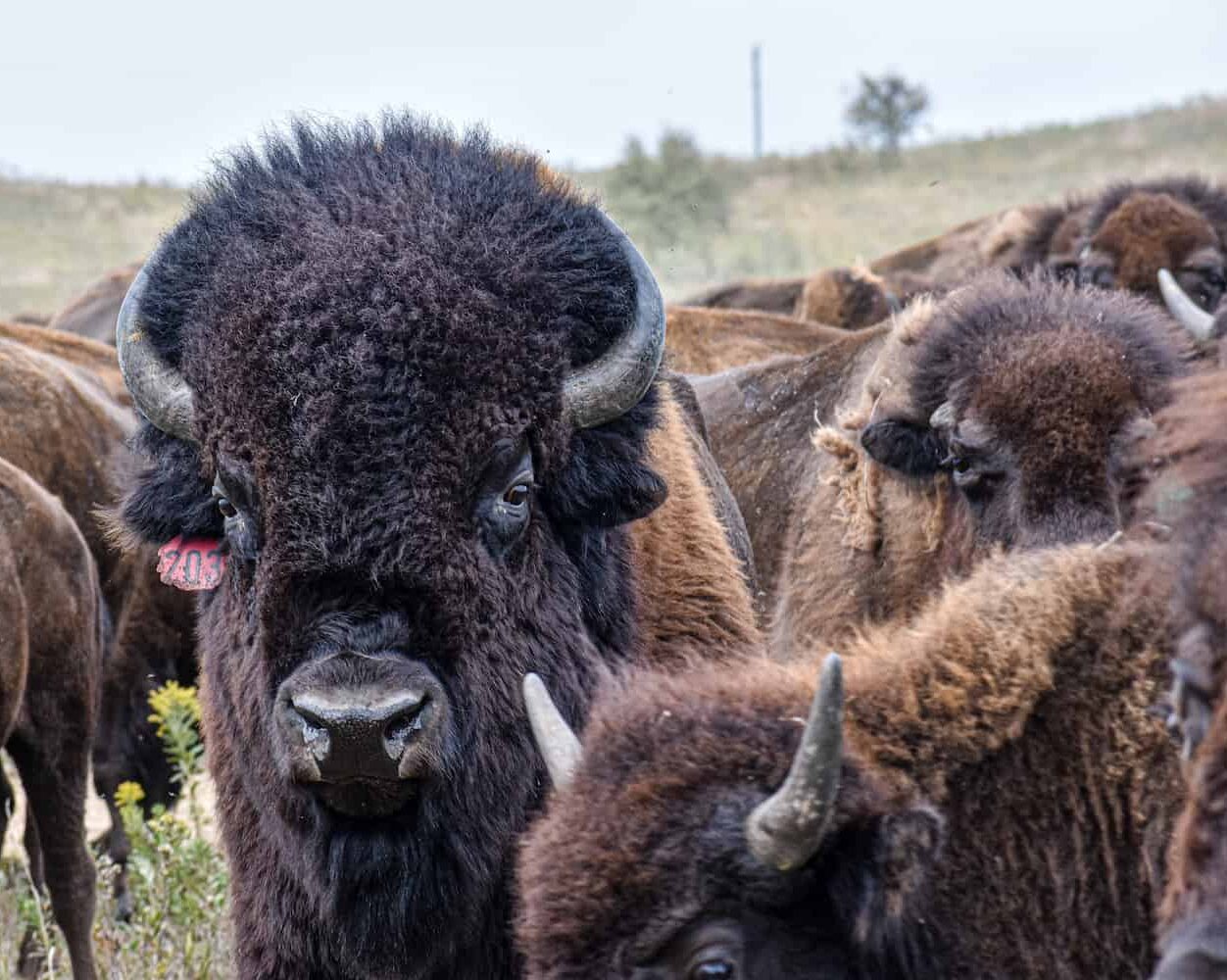
Characteristics:
| Characteristic | Female | Male |
|---|---|---|
| Beard | Not pronounced; short | Lengthy on Plains bison; Less pronounced on Wood bison |
| Cape | Pelage less complete | Raised pelage, beard and leggings on Plains; less complete on Wood |
| Head | Elongated; feminine, more refined | Masculine; large muzzle |
| Horn | Smaller diameter; more proportionate | Massive with age; thick base |
| Hump | Less pronounced; narrower | Massive, angular; broad |
Reproduction: The Rut
Breeding season, referred to as “the rut”, is typically late July through early September. Cows carry the calf for almost nine months, resulting in births during April and May.
At birth, calves usually weigh 45 to 50 pounds. Rarely are there calving problems unless the cows are over conditioned (carrying excess weight).
Buffalo females reach sexual maturity at age two, delivering their first calf at age three. Unlike other livestock, buffalo have a long productive lifespan often calving into their twenties. As a rule, producers can expect at least five more calves in a lifetime than a beef cow will have.
It is important to evaluate the condition of your cows the months ahead of breeding season. Their animal instincts are such that they are survivors first and producers second. If they do not have adequate nutrition, particularly young stock as they are still growing themselves, prior to breeding season they most likely will not cycle and conceive. To ensure adequate nutrition some producers augment with grain just prior and during the rut.
Opinions vary considerably as to how many bulls are needed. Suggested numbers range from one bull for every twelve cows (large herds) to one for every twenty five (single-sired herds). This is very dependent on the bull’s personality. Some are aggressive breeders while others are aggressive fighters. It is often suggested to have a mix of bulls of different ages to promote breeding and avoid bulls becoming “lazy” without competition.
A bull will generally start courting a female just before she goes into estrus and may stay with her for a day or two after having bred her. The time (generally only a matter of days) that a bull spends with one cow varies significantly on each bull’s behavior.
Care should be taken that your animals are not inbred. Inbreeding most often leads to smaller, poorer producing offspring which may have physical abnormalities. Selecting good conformation breeding stock to begin a herd is a critical factor to the operation’s financial bottom line. Minnesota Buffalo Association’s annual judged auction offers quality breeding stock for the benefit of all producers.
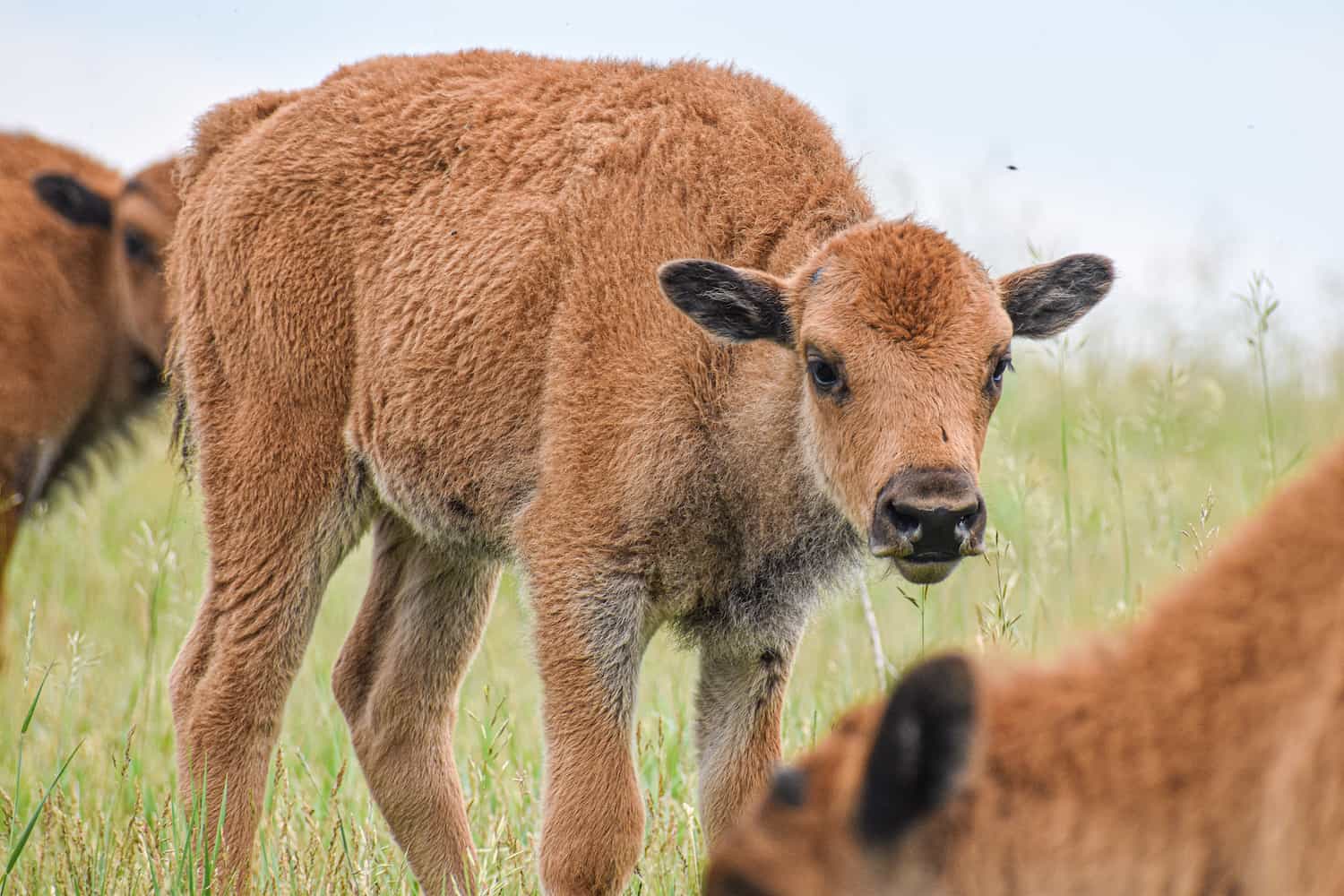
Note
Artificial insemination is not utilized in the reproduction of bison.
Rules, Regulations and Statutes
When one embarks on establishing a buffalo raising enterprise one of the first questions to be asked: Is it allowed?
(The following is as it relates to Minnesota. Those considering raising bison outside of Minnesota begin by contacting the government office that oversees land use in your area.)
Local County or Township Zoning regulations dictate where livestock operations are allowed. Agriculture Zone Districts are areas where raising livestock is allowed. If you are beginning with an existing farming operation, make sure that you would be allowed to continue or be “Grandfathered In” for your intended use. If it is a new operation you will need to acquire the appropriate local permits to begin after meeting all the zoning requirements for the location. Checking with local zoning officials should be your first step.
Operation Types
Your bison operation will not be exactly like anyone else’s. That is why those considering bison are highly encouraged to visit as many existing operations as possible. Learning as many options from current producers will help guide your decision making as to what will work into your operation.
A business plan is essential as well if you intend to guide your profitability.
Selecting sound, good quality animals at the beginning is economically desirable. MnBA sponsors a bison auction annually the Saturday following Thanksgiving where excellent breeding stock is available.
Cow ~ Calf
Raising and marketing an annual bison calf crop for both breeding stock and meat processing.
Backgrounding
Growing weaned calves through the yearling stage in preparation for finishing animal for production.
Finishing
Feeding older yearlings and young two-year-olds in preparation for pro-cessing. Depending on the operation, this can occur in pasture or in feedlots or a combination of the two.
Note: Currently, many bison raisers are involved in all three activities listed.
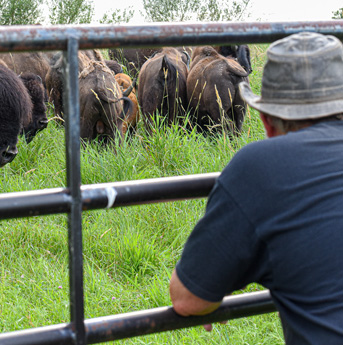
Feedlots
Minnesota State Regulations:
The Minnesota Pollution Control Agency (MPCA) regulates Animal Feedlots and may delegate their authority to Counties. As the title implies they are concerned about potential pollution hazards that come with raising buffalo.
A feedlot is generally defined as a “lot or building or combination intended for the confined feeding, breeding, raising, or holding of animals and specifically designed as a confinement area in which manure may accumulate, or where the concentration of animals is such that a vegetative cover cannot be maintained within the enclosure.”
Feedlot requirements address location restrictions, manure management, land application, water quality standards (runoff from your site), air quality standards, manure storage, manure stockpiles and even the storage of some feed. While some of these rules may sound rather daunting you will soon realize that most of them are common sense issues. The bottom line is that your “operation” of raising buffalo is not allowed to cause pollution problems.
Note
Good bison herd management is not as simple as just buying some animals and letting them graze a fenced area. It takes a good deal of knowledge, work and business savvy to make a profitable operation. Participation in bison industry meetings will keep you in touch with market trends and successful management practice.
Economic Analysis
Economic analysis resources for bison are available from the North Dakota State University Livestock Research Program and the Bison Producers of Alberta.
Land and Fences
Stocking rates will be similar to those of pasture raised cattle in your area. Your local University Extension Service could be an excellent resource.
A variety of fencing materials are used by people in the bison industry. Existing well-made cattle fences can be adapted by adding additional height.
Your pasture location and size will influence the type of material you select. As you visit different current producers take special note of what they have designed for their operation.
The two most common types of pasture fencing materials used are 5 strands high of either barbed or high tensile wire. If you have a small pasture, or you are located near a busy road, high tensile woven wire should be considered.
Bison typically will not put pressure on a fence if there is sufficient fresh water and food. More athletic than cattle, they are able to jump higher. Because of that fences should be at least 5 foot tall. Some areas might need to be higher when winter snow build up is considered.
Almost any style of gate can be used if it is high enough and as long as you remember to close it.
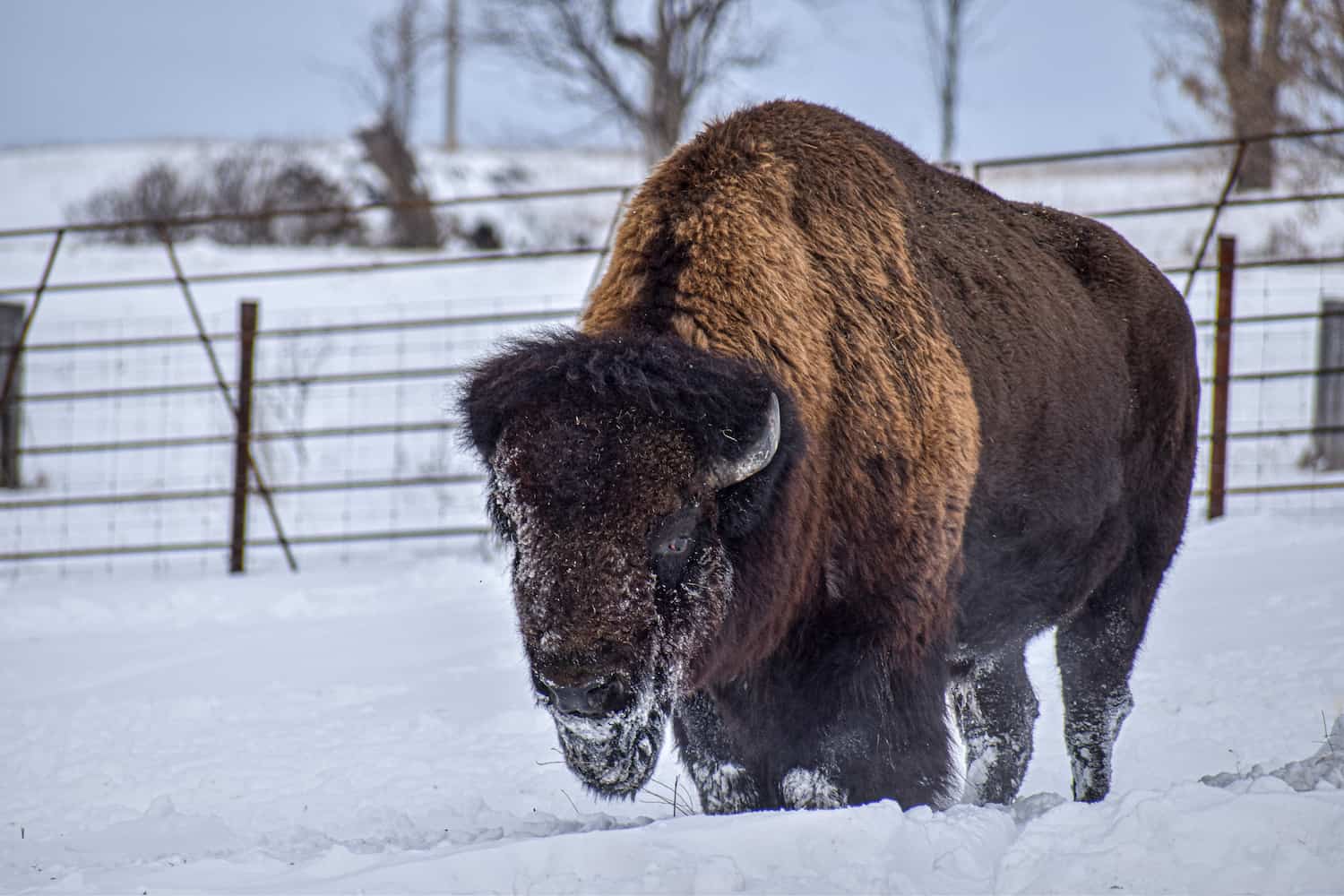
Transporting
Bison are typically transported in conventional stock trailers. Many search for aluminum built to lighten the total weight. Once on the road the animals generally settle down and are not difficult, even for long distances, to haul. Chaining and locking all trailer doors is a wise procedure to adopt.
Bison are regulated the same as cattle by the states and federal government. They need health certificates when they change ownership. Requirements vary from state to state. Work with your veterinarian to determine the requirements established for the state of destination.
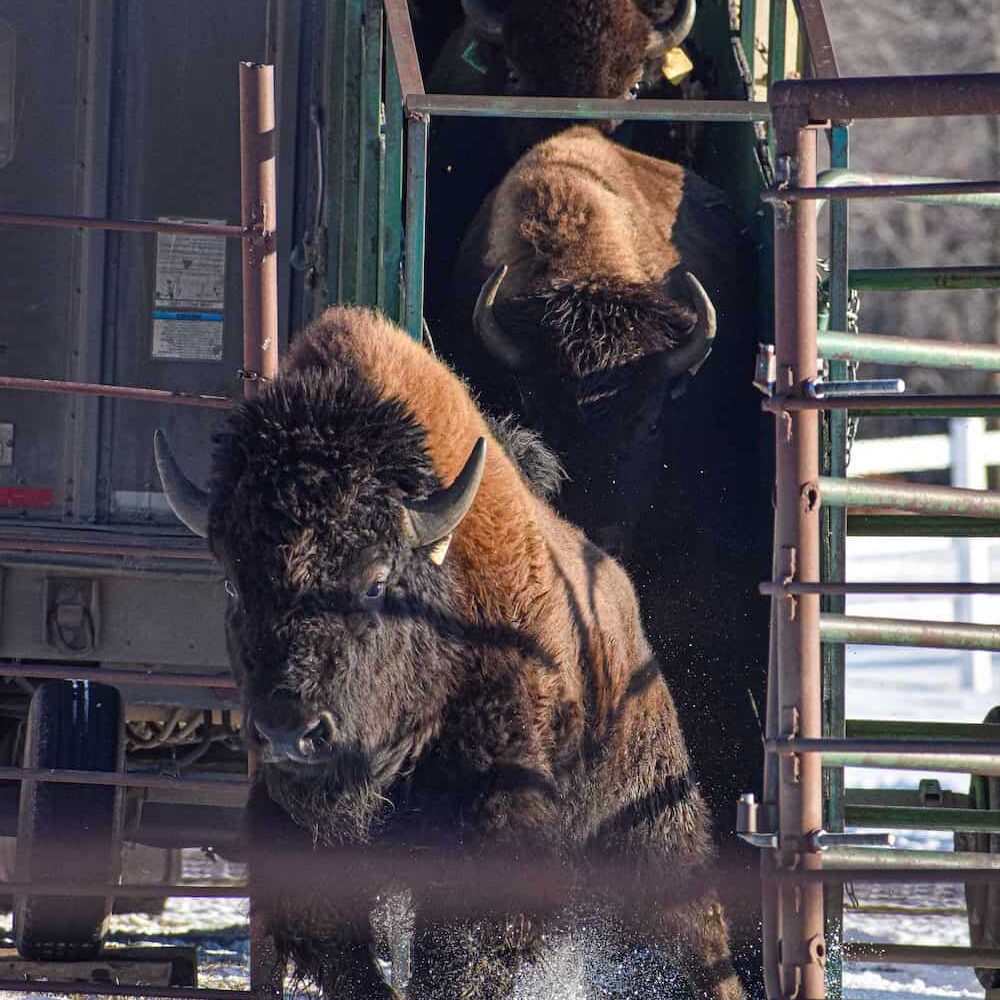
Facilities
Although bison do not need shelter from the elements, which is a significant cost savings, you will need a stout corral for working, separating and selling your animals. Here again, many different types of materials are used. Affordability and availability often dictate what is selected.
The two most common styles of corral are “solid” and “see-through”.
Solid corrals: Typically the most expensive and need to be taller to prevent the bison from trying to jump out. You also need a platform, cat walk, for working the animals either from above or on the side. Some producers indicate from their experience animals are more likely to charge in a solid corral.
See-through Corrals: These corrals are often made of used sucker rod and pipe from the oil fields or portable six foot cattle panels. This allows working the animals from the side, or if you choose to go into the corral to move animals the see-through system allows for a quick escape route. Also in this type of system some producers place a solid panel or tarp in areas where animals might perceive the rod or pipe space to be their escape route.
Squeeze Chute
This is a must have including a front crash gate. In recent years companies have begun designing chutes that are specific for bison and allow for smoother handling of the animals. While visiting current producers ask to see the working area and make sure to ask a lot of questions!
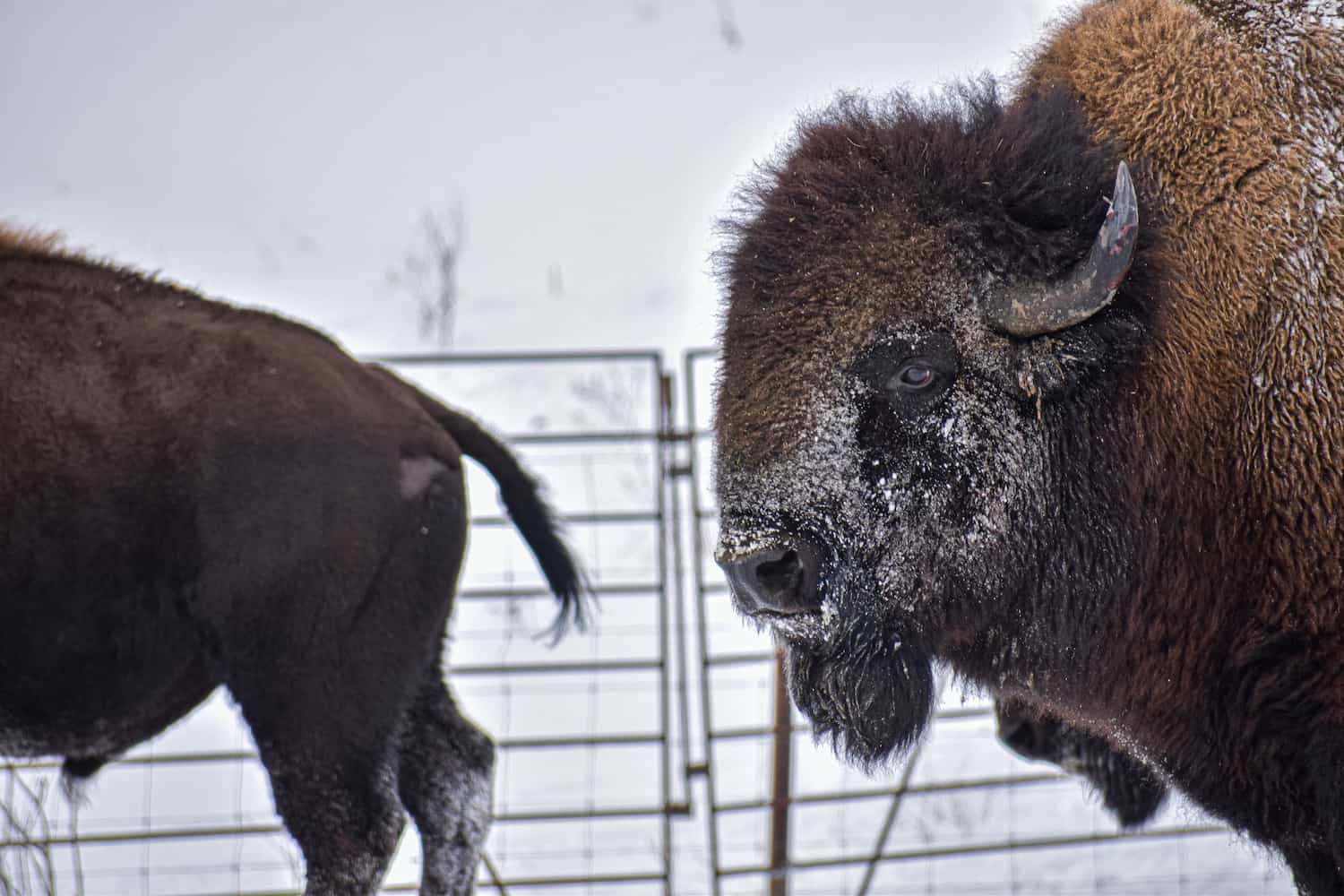
General Herd Health
For the most part, protecting bison from the various problems that affect cattle is a personal matter under the direction of your veterinarian. There are advocates to vaccinating for clostridium and pinkeye, and only female calves for brucellosis.
Visiting established producers in your area to determine what practices they have adopted will also assist you in determining what practice you will implement.
Nutritional Needs
Bison need today the same food they did centuries ago, a mixture of grasses and grass hay. A variety of mixtures that may include minerals, vitamins, grain and/or corn are given by certain producers to augment the nutrients the animal needs to stay healthy. Some pastures do not carry all the essential nutrients the bison require.
A desired protein level in their nutrition is between 10 to 12 percent. An operator needs to take into consideration: grasses, hay and any supplemental feeding they choose to supply.
Animal performance is a direct result of their nutritional intake.
While you may read elsewhere that bison will do better than cattle on poor pasture, use good management practices. Yes bison are less picky, need less protein and eat a wider variety of grasses and weeds. Improper nutrition results in underfed and underdeveloped animals which is not only cruel but also financially unsound.
Malignant Catarrhal Fever (MCF)
While not common, this virus is fatal to bison. The most common presenting clinical signs are anorexia, depression and bloody diarrhea.
The principal hosts for this virus are sheep and goats, in which the virus causes no disease. There is no known treatment protocol for the disease in bison. For that reason it is advisable to keep bison at least one mile, if not five, away from sheep and goats.
Parasites and Control
In the raising of bison parasite control is one of the most critical factors to pay attention to, especially in the upper Midwest where pastures are usually small and where heavy dews or general moisture is common. While bison are more resistant to most diseases that afflict cattle, bison are known to succumb to internal parasites.
What a veterinarian might consider mild infestation in a cattle herd, should be considered severe in bison. Internal parasites attach themselves to the bison’s intestinal lining. This causes inflammation and scaring of the lining. It prevents the animal from absorbing nutrients leading to malnutrition and poor health. In severe cases parasites can be fatal to bison.
How you de-worm your animals depends on your management program. De-wormers are all poisons and overdosing can bring about illness or death.
Methods of parasite control include:
- Injections such as Ivomec and its substitutes. Very effective and should be used when animal is in a squeeze chute. Use Ivomec Plus if you live in a high moisture area or animals have access to ponds to control liver flukes.
- Safeguard: This product can be bought mixed in to feed or you can mix it in yourself. It is effective if every animal consumes the required dose. It is difficult to overdose with this product, hence the name.
- Water Soluble: Levasol soluble hog wormer is an effective control if source of water is controllable and if every animal consumes the required dosage. Some producers add sweetened Kool-Aid powder to increase palatability.
- Pour – On or Spray – On: These products have been known to work. Care must be taken to not overdose. Some veterinarians consider this a poor option during winter months due to the bison’s heavy coat.
(The specific de-worming brand names noted above does not represent endorsement, it simply indicates those products that have been found to be effective with bison.)
After worming it is a good management practice to move the herd to a new pasture to avoid re-infestation. Internal parasites have a three week life cycle so de-worming in three weeks also supports good management practice. If pasture rotation is not an option, increased frequency of de-worming is suggested.
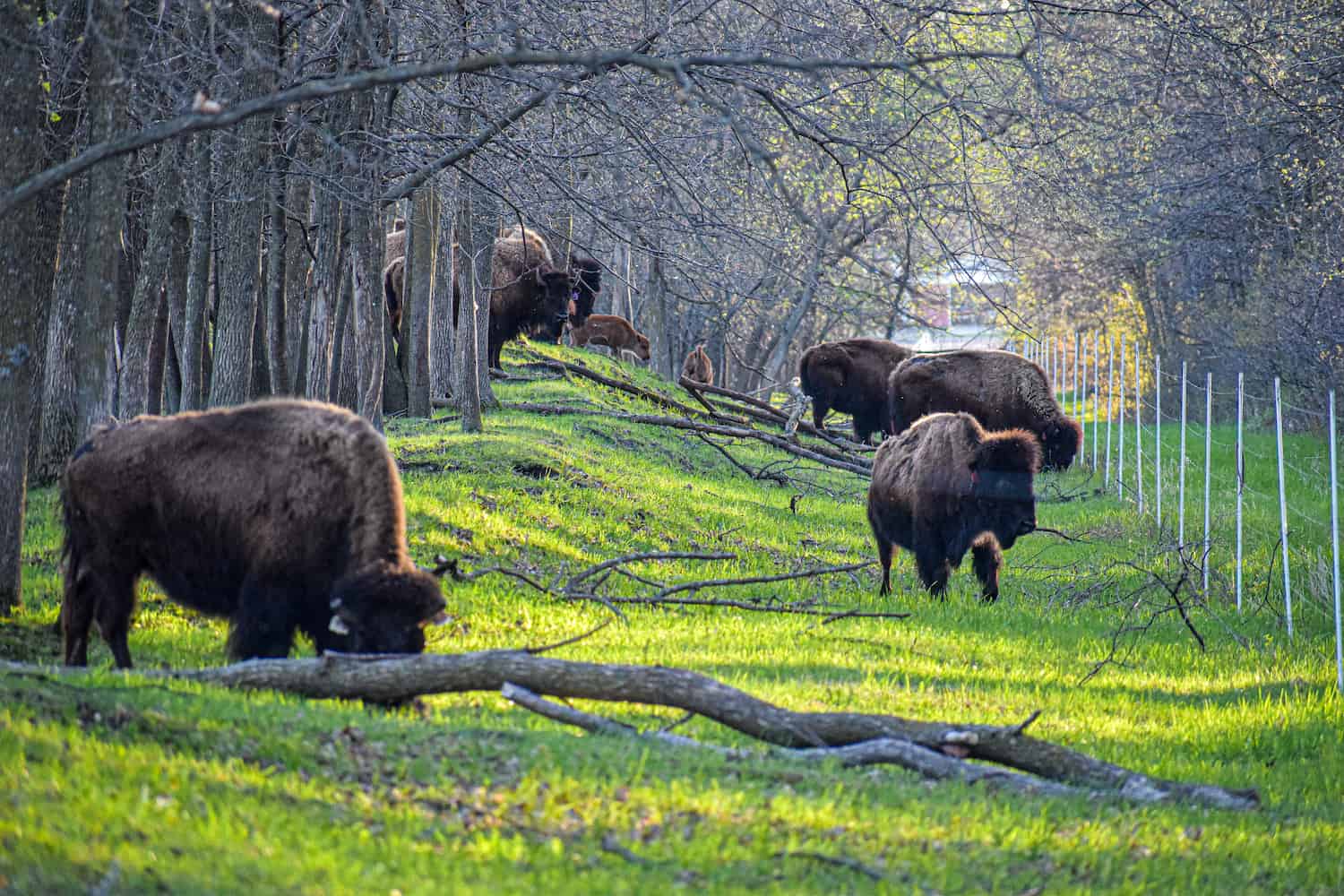
Note
Vaccinating for brucellosis is also referred to as calfhood vaccinate, OCV’d or Bangs. Do not vaccinate bulls as it causes sterility. Most auctions require females to be vaccinated.
Marketing
You will need to decide what type of operation you are going to manage.
One of the biggest decisions a bison producer must make in their operation is how to market their bison. Unlike the cattle industry, the marketing options for bison are endless and limited only by the producer’s imagination and energies.
Although bison have been in North America for centuries, the bison meat industry is very new. Producers, Meat marketers and National and State/Regional Associations have worked diligently, and will continue to work, in recent years to promote bison meat and to familiarize the consumer on bison meat’s nutritional benefits blended with the knowledge of its fabulous flavor.
Selling Live Animals
- Selling your animals to bison feedlot/finishing operations.
- Market breeding stock and sell at auctions or by private treaty
- Sell ready to harvest to a consumer and deliver it to the processing plant for them
- Sell organized Bison Hunts
- Offer an Absentee Ownership program for those who would like to have bison but do not have the land. They buy your animals yet remain on your property and you receive pay for the animals care.
- Selling finished animals to processors
Selling Bison Meat
Bison meat appeals to both the health conscious consumer as well as those who enjoy gourmet dining. All customers will look for consistent texture and flavor in the meat you supply.
Selling Options:
- Direct from the farm/ranch. Customer comes to farm or you deliver
- Farmers Markets
- Restaurants and Grocers
- Internet sales
Bison By-products
This market is primarily a specialty market. The products sold range from skulls, hides, leather, to trophy heads. Often these items are sold as decorative products and again are limited only by the producers imagination.
Agri-Tourism
Tours of bison operations have become very popular in the United States, from small groups of bus loads. Some producers also hold weekend Events/festivals that include promoting raising bison augmented with a bison meat meal and selling bison meat for guests to take home.
There is great benefit for you to become actively involved with your community. Determine those organizations and events that interest you and you will be surrounded by like-minded individuals. It allows you to get to know prospective customers in a relaxed atmosphere while at the same time they too get to know you. Beyond new friendships, you will create an awareness of bison and a buzz about the terrific meat will be generated.
Active participation in bison association events will create important contacts and an increased knowledge of all the opportunities that lie ahead for the willing producer/marketer.
Healthy Never Tasted So Good
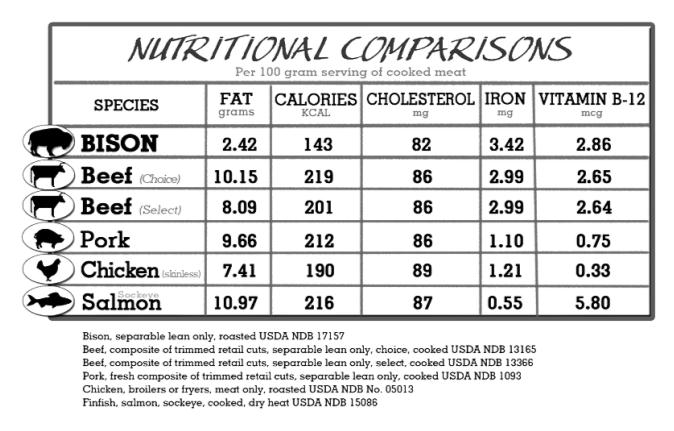

Note
It is essential prior to proceeding with any marketing that an operator investigates all regulations and legal restrictions enforced by their local and state agencies as well as federal regulations.
Historical Overview
While the North American history of these animals may not have a direct impact on your decision, we would be remiss to not share a brief review. Many current producers say the history is what has created their passion for raising bison and by doing so assist in the animal’s survival for generations to come.
Using historian writings, who gathered information from pioneer journals, blended with scientific guesstimates massive bison herds amounted to somewhere between 12 to 100 million across North America depending on which reference one sites.
The herds stretched from northern Mexico to the northern prairies of Canada and from Oregon to almost the Atlantic Ocean.
Bison were hunted almost to extinction in the 19th century. The US Government promoted the hunting for various reasons, the major one being economics.
Bison were the primary food source of Native Americans. Without it the tribes would leave or starve. Popularity of their fur, made into clothing, added to the decimation. Also the herds would damage locomotives and delay trains for days. Commercial hunting was the proposed solution.
In 1874 President Grant vetoed a bill to protect the buffalo. Then in 1875, General Sheridan promoted the slaughter to deprive the Native Americans. By 1884, the American Bison was close to extinction.
Thoughtful conservationists and local farmer/ranchers prevented their extinction. Today bison are back to at least the quarter of a million mark in the US. The bison industry is one of the fastest growing livestock segments in today’s US agriculture.
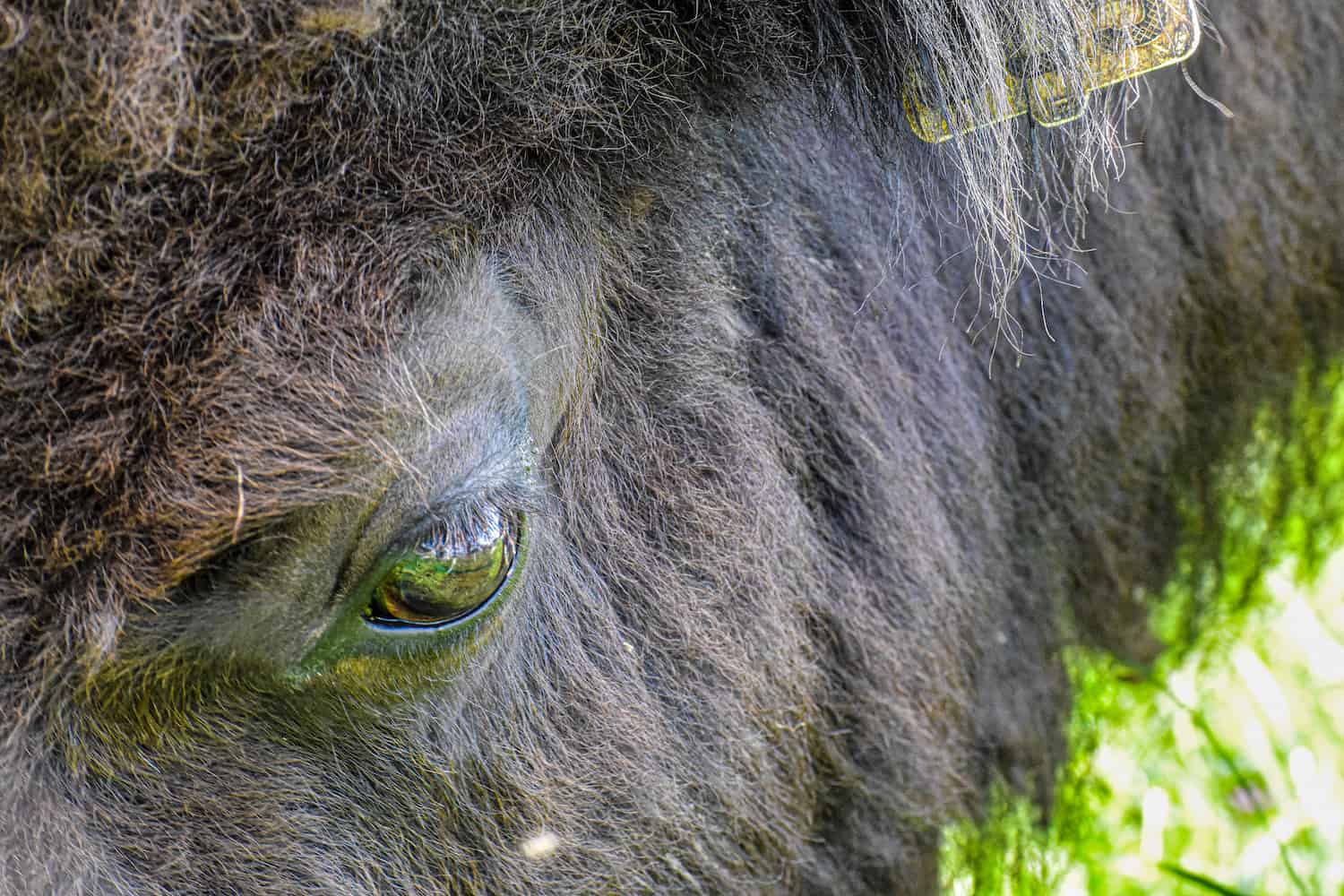
Historical References
- American Bison: A Natural History by Dale F. Lott
- Field Guide to the North American Bison: A Natural History and Viewing Guide to the Great Plains Buffalo by Robert Steelquist
- The American Buffalo in Transition, by J. Albert Rorabacher
- The Destruction of the Bison: An Environmental History, 1750-1920 by Andrew C. Isenberg
Glossary and Terminology
| Term | Definition |
|---|---|
| Approximately | Plus “About” , “Roughly” and ”Typical”: You will see these words used throughout this publication. As with everything in life...there are always exceptions. |
| Bull | All male bison are referred to as bull |
| Calf | Newborn bison, male or female, up to 12 months of age |
| Cape | Hair located over their shoulders |
| Chaps | Long hair on bison’s front legs |
| Cow | Adult female that has had a calf |
| Heifer | A female bison that has not had a calf |
| OCV’d | An acronym used to identify that a female has received brucellosis vaccination |
| Pelage | Hairy covering of a mammal |
| Rut | Season, typically July to September, that breeding occurs |
| Wallow | A dirt “bowl” that bison roll side to side in |
| Weanling | Like a Yearling, is between one and two years of age |
| Yearling | A bison that is, between one and two years of age |
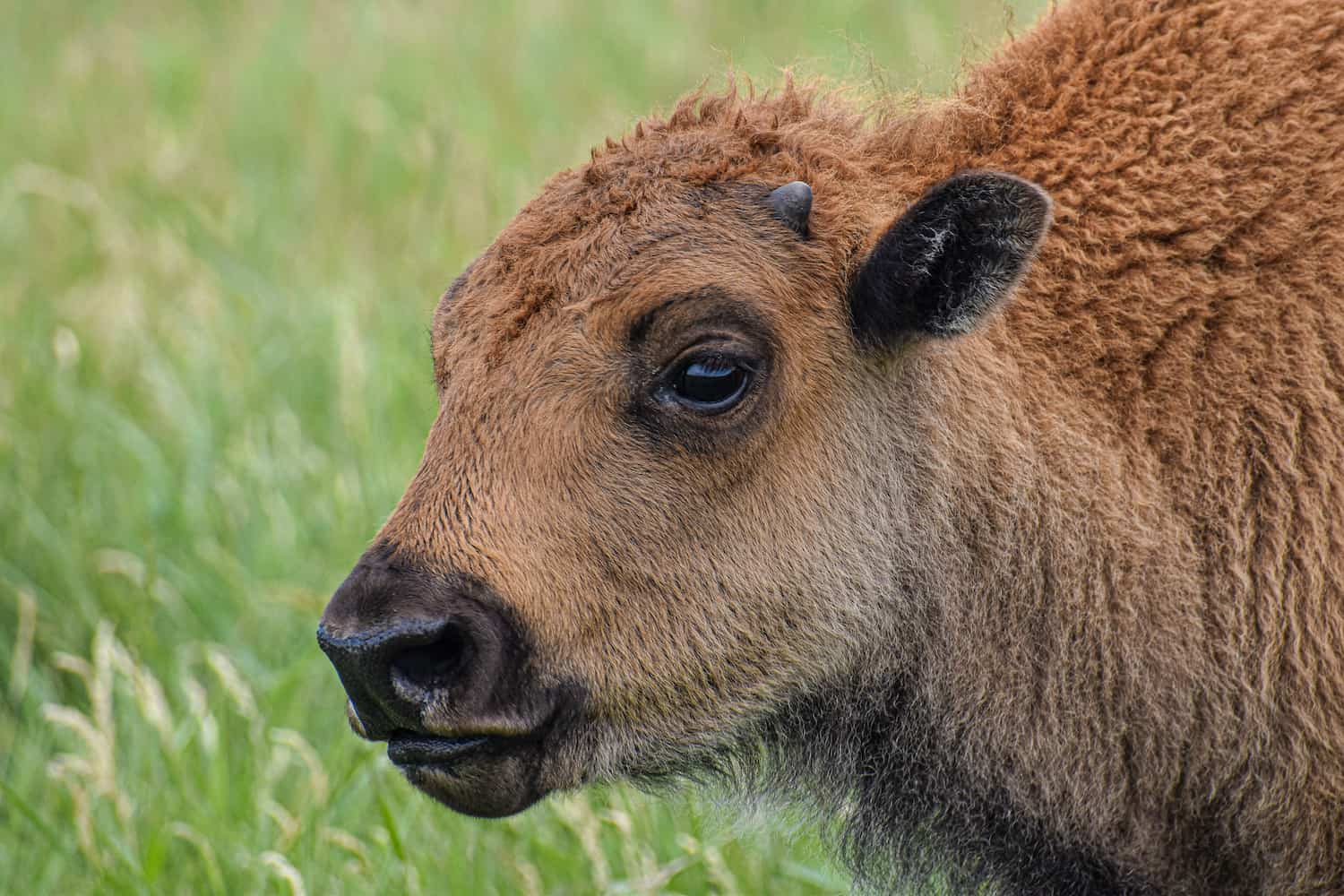
References
Danz, Harold P. Of Bison and Man: From the annals of a bison yesterday to a refreshing outcome from human involvement with America’s most valiant of beasts. Niwot, Colorado: University Press Colorado, 1997
Dowling, Kim. Buffalo Producer’s Guide to Management and Marketing: National Buffalo Association. Chicago, Illinois, 1990
Geist, Valerius. Buffalo Nation: History and Legend of the North American Bison. Stillwater, Minneapolis: Voyageur Press, 1996
Grandin, Temple • www.grandin.com/ Expert in animal handling facilities. Website offers facility options
National Bison Association. Bison Breeders Handbook. Denver, Colorado: Mountain West Printing, 4th Edition 2001
Olson, Wes. Portraits of the Bison: An Illustrated Guide to Bison Society. Edmonton, Alberta: The University of Alberta Press, 2005
Smith, Burth. Moving ‘Em: A Guide to Low Stress Animal Handling. Kamuela, Hawaii: The Graziers Hui, 1998
Bison Basics Booklet Writers
Dale Rengstorf; Rolling R Bison Ranch, Pelican Rapids, MN; Sections: The Rut; Land and Fences; Transporting; Facilities
James R. Stannard,III; Big Shaggy Buffalo Farm, Byron, MN; Sections: Rules, Regulations, and Statures; Feedlots
Gail Griffin; Rockie Hill Bison, Winona, MN; Remaining content, booklet design and Editor
Resources
Minnesota:
Minnesota Bison Association (MnBA) 507-454-2828 • mnbison.org
Minnesota Pollution Control Agency (MPCA) • pca.state.me.us
MN Board of Animal Health (BAH) • bah.state.mn.us
MN Department of Agriculture • mda.state.mn.us
Ag in the Classroom - 651-201-6688
Farmers Market Specialist - 651-201-6491
Meat Inspection Supervisor - 651-201-6225
Minnesota Grown - 651-201-6510
University of MN - Large Animal - 612-625-6700
Additional:
National Bison Association (NBA) 303 -292-2833 • bisoncentral.com
- Bison 101 & 201 - Online course offered by National Bison Association
- Bison Producers Handbook - Extensive production information including nutritional needs, herd health, etc.
Canadian Bison Association (CBA) • canadianbison.ca
A variety of research and education available particularly through their links to Regional Associations and Provincial Government Sites
Natural Resources Conservation Service • nrcs.usda.gov
Technical references on EQIP and pasture management
USDA’s Risk Management Agency • rma.usda.gov
Information on Crop Insurance and the Financial Aspects of Bison Production
National Agricultural Statistics Service • nass.usda.gov
USDA’s Home Page • usda.gov
Ag Market News reports • ams.usda.gov/market-news
USDA Economic Research Service • ers.usda.gov
Thank You
The Minnesota Bison Association (MnBA) extends its gratitude to those who made this booklet a reality including:
- USDA’s Risk Management Agency
- MN Department of Ag’s Minnesota Grown Promotion Group
- MnBA members who served as writers and reviewers - Christie Ankarlo, Tom Barthel, Dave and Sue Beckstrand, Gail Griffin, Dave and Julie Halverson, Dale and Beth Rengstorf, James R. Stannard, III, and Mike and Tricia Vetrone.
First printed edition: August 2008. First Website edition: October 2012
All rights reserved. No part of this book may be reproduced without written permission of the Minnesota Bison Association.
While reasonable care has been exercised in the preparation of this booklet, the Minnesota Bison Association assumes no responsibility for errors or omissions, or for damages resulting from the use of the information contained herein.

